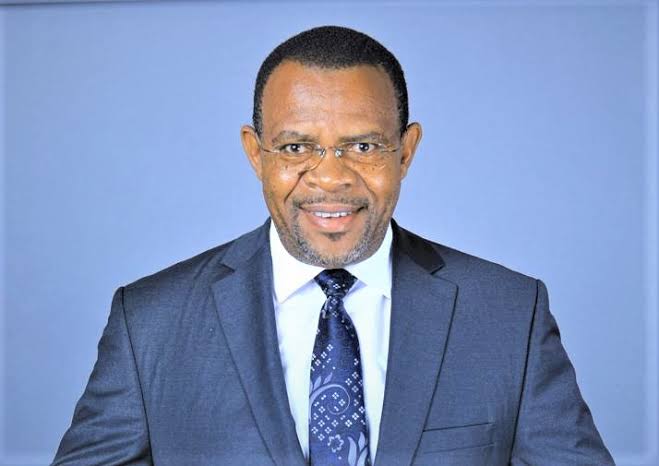
 Peter Njenga, Managing Director and CEO of KenGen/HANDOUT
Peter Njenga, Managing Director and CEO of KenGen/HANDOUT
Two weeks ago, at the Sustainable Energy Conference in Olkaria, and a week earlier at the Africa Climate Summit in Addis Ababa, one theme dominated the discussions, Africa can no longer afford to wait. The continent’s future depends on its ability to harness renewable energy and Kenya is at the centre of that story.
Indeed Kenya stands at an inflection point. Our economy is growing, our cities are expanding and our population is becoming more urban, more connected and demand for power ever peaking. With this progress comes surging demand for electricity. But we face a double bind, how to power that growth while protecting our economy and our people from the destabilising forces of climate change. The old model of relying on imported fossil fuels or overdependence on hydropower is no longer sustainable. The time for incremental progress has passed. Kenya must move decisively and invest boldly in renewable energy.
Nation rich in untapped potential
Few countries are as blessed with renewable resources as Kenya. Beneath the Rift Valley, lies immense geothermal potential, already making us one of the global leaders in this technology. The winds across Turkana, Marsabit and Ngong Hills are steady and strong. The solar irradiation across northern, western and eastern Kenya is only second if not better than that of the Arabian Peninsula. And our rivers, descending from highland forests to the Indian Ocean, still hold untapped power potential despite the legacy hydroelectric power projects
But natural abundance is not enough. Resources only become assets when they are harnessed, put to good use for the good of both humanity and the planet. Too often in Africa’s history, natural wealth has remained dormant while the continent paid a heavy price importing what it already possessed in another form. For Kenya, energy independence and energy security mean turning potential into power.
Proof renewable energy works
KenGen has seen this firsthand. Our geothermal plants in Olkaria, Naivasha, are now the backbone of Kenya’s grid feeding more than 40 per cent of the energy that Kenyans consume every day. They provide not just clean electricity but also a model of what renewable energy can achieve: reliable baseload power that drives factories, lights homes and powers digital businesses. It has electrified communities, created jobs and demonstrated that renewable energy is not a luxury for the wealthy world it is a driver of development in Africa.
The global community is taking notice. Kenya now ranks among the world’s top 10 geothermal producers. In a continent where 600 million people still lack access to electricity, this matters. It proves that Africa is not doomed to be an energy laggard; it can be a pioneer.
Urgency of climate change
But our progress is fragile. Climate change is already reshaping daily life. Farmers are struggling with erratic rains and prolonged droughts. Hydroelectric reservoirs, once the pride of our power system, are shrinking, exposing the dangers of relying too heavily on one source. Meanwhile, heat waves are driving up energy demand just as water scarcity reduces supply.
Economic case
Beyond climate resilience, the financial logic is clear. Fossil fuels are costly, volatile and imported. Every barrel of oil we import drains our foreign reserves, exposes us to geopolitical risks and leaves our economy at the mercy of unpredictable global markets.
Renewables flip this equation. Geothermal, hydro, wind, solar harness resources we already possess. They generate green jobs at home, from manufacturing solar panels and turbines to building and maintaining power plants. They stabilise electricity prices, which makes our industries more competitive. And they attract global investors, many of whom are actively seeking green infrastructure projects. Every dollar spent on renewables is an investment.
What it will take
To unlock this potential, Kenya must act on several fronts. First, policy ambition. Kenya has made important progress with feed-in tariffs and progressive power purchase agreements. But we need to go further. Clearer regulations, faster permitting and bolder targets will give investors confidence and accelerate timelines. The global energy transition is moving fast, unless we keep pace, we risk being left behind.
Second, innovative financing. Renewable projects require large upfront investment, but the long-term costs are lower. Kenya should expand its use of green bonds, blended finance models and public-private partnerships. Development finance institutions are eager to fund clean energy. Our challenge is to provide bankable projects and transparent frameworks.
Third, human capital. A renewable revolution is not just about technology, it is about people. Kenya must invest in capacity building, training technicians, engineers and energy entrepreneurs. Our universities and technical colleges should partner with industry to create a workforce ready for the next generation of power systems.
Fourth, community participation. Energy projects succeed when local people see tangible benefits. Communities must not only gain access to electricity but also share in jobs, business opportunities and even equity. Projects that treat host communities as partners rather than obstacles move faster and last longer.
Finally, partnerships. At KenGen, we plan to expand our renewable capacity by more than 1,500MW over the next decade. But this is only one part of the puzzle. The private sector, government, international investors and development partners must collaborate at scale. This is not a race Kenya can run alone
A global opportunity
Yet, this is also a moment of great geopolitical significance. The global energy transition will reshape trade flows, supply chains and alliances. Countries that control renewable resources, from cobalt and lithium to geothermal fields and wind corridors, will have new leverage in the world economy. Kenya must not miss this chance to define its role.
The costs of delay are steep: slower growth, higher fuel imports, greater exposure to climate shocks and lost opportunities in the global green economy. The rewards of action on the other hand are just as clear; energy security, job creation, competitiveness and climate leadership.
Path forward
The world is watching. Kenya has a chance to show what an African nation can achieve when it marries ambition with action. By fast-tracking renewable investment, we can light homes, power industries, secure our future and contribute meaningfully to the fight against climate change.
Our choice is stark but simple. We can cling to outdated models and pay the price. Or we can leap forward, harnessing the power beneath our feet and above our heads and claim our place in the global green transition.
The writer is the managing director and CEO of KenGen, md&[email protected]















